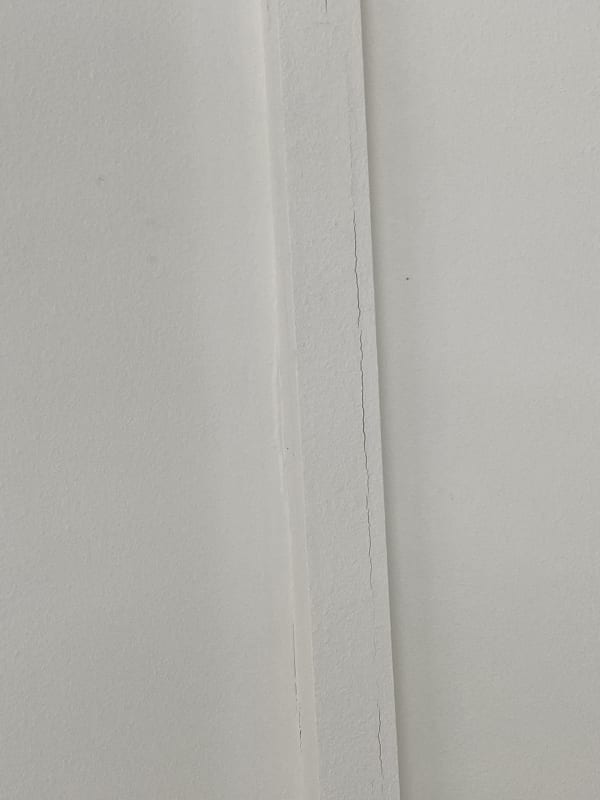Richie-Rich
Computer
- Nov 29, 2021
- 3
Hello, hope you guys had a great thanksgiving. About two years ago, I built a portion of our house with vaulted ceiling etc.. I am seeing cracks in the sheet rock (gypsum board) under the ridge beam. The foundation is about 20 - 12 ft deep piers (16 in diameter, and about 6 ft apart) with 24 inch wide grade beam on these piers. I am not seeing any noticeable cracks anywhere else - either the inside or outside walls. Attached is the picture:

I did contact the structural engineer who designed this and he does not think it is the crack in ridge beam, some issue with the gypsum board.
What do you guys think?
I think there is no insulation between the ridge beam and the gypsum board, is it because the contractor did not put insulation between the ridge beam and sheet rock, and the ridge beam (parallam brand) had different amount (or size) of contraction and expansion (in day (60-80F) vs night (30-50F) time) than gypsum board that this happened because of that differential? Or do you guys think I really should get this investigated instead of just patching the crack up and repainting it?
Thanks for your time!

I did contact the structural engineer who designed this and he does not think it is the crack in ridge beam, some issue with the gypsum board.
What do you guys think?
I think there is no insulation between the ridge beam and the gypsum board, is it because the contractor did not put insulation between the ridge beam and sheet rock, and the ridge beam (parallam brand) had different amount (or size) of contraction and expansion (in day (60-80F) vs night (30-50F) time) than gypsum board that this happened because of that differential? Or do you guys think I really should get this investigated instead of just patching the crack up and repainting it?
Thanks for your time!


